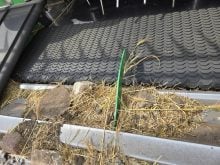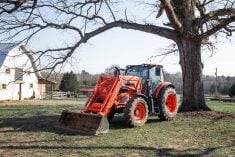Two new midge tolerant wheats, a hulless milling barley, a new line of flax and a line of brown condiment mustard are among the new crop lines supported for registration by the Prairie Grain Development Committee this year.
All told, more than 50 new crop lines were considered for registration during the three-day event, held Feb. 23-25 in Saskatoon.
A total of 43 candidate lines were supported, including eight barley lines, three oats, seven peas, three lentils, four fababans, six dry beans, one flax, one mustard, three triticales and seven wheat lines, including one new durum.
Read Also

Saskatchewan dairy farm breeds international champion
A Saskatchewan bred cow made history at the 2025 World Dairy Expo in Madison, Wisconsin, when she was named grand champion in the five-year-old Holstein class.
The PGDC meetings are intended to evaluate new crop lines and to determine whether they are fit for registration and commercial production in Western Canada.
Lines supported for registration will go to the Canadian Food Inspection Agency’s variety registration office in Ottawa, where final registration approval is granted or denied.
Among this year’s more notable lines were BW410 and BW415, a pair of midge tolerant red spring wheats developed by Agriculture Canada plant breeders Stephen Fox and Julian Thomas.
According to Agriculture Canada’s David Gehl, the awned wheat lines were derived from McKenzie and AC Barrie respectively.
Of the two lines, BW415 appears to have the highest yield potential.
It also offers significantly larger kernel size relative to other midge tolerant varieties and is resistant to loose smut.
BW 410 is resistant to common bunt.
If the two lines receive registration approval from the CFIA, they would be the fifth and sixth midge tolerant wheat lines approved for commercial production in Canada.
Other varieties already in commercial production or being multiplied by seed growers include red spring varieties Unity, Goodeve and Fieldstar, as well as Canada Western Extra Strong variety, Glencross.
Hulless milling barley line HB122 was one of eight new barley lines recommended for registration.
HB122 is a two-row hulless milling line developed at Agriculture Canada’s Brandon Research Centre.
It offers marginally higher yield potential than the check variety, Millhouse, slightly earlier maturity, improved lodging resistance, improved kernel characteristics, an improved foliar disease package and improved flour and dough characteristics.
Other lines supported for registration
- A line of flax that offers significantly higher lodging resistance than Flanders and greater oil content. It also offers significantly higher iodine content than Bethune, immunity to rust and moderate resistance to fusarium wilt
- A new brown condiment mustard line that offers higher seed yield than the check variety Duchess
- BW423, a western red spring variety developed by CDC wheat breeder Pierre Hucl
- A pair of red winter wheat lines, W434 and S01-285-7*R
- DT801, an amber durum variety with improved reaction to fusarium head blight
- HY985, a Canada Prairie Spring red variety developed by Syngenta
- Three new spring triticale lines, T198, T200 and T204
- OT3037 and OT3044, two milling oat lines from the Crop Development Centre (CDC) in Saskatoon
- OT3039, a feed oat variety from the CDC
- SR424 and SR425, a pair of six-row malting barley lines from the CDC
- TRO7114, a high enzyme two-row malting barley line from the CDC
- TRO8684 and TRO8732, a pair of two-row general purpose barley lines
- HBO8395, a two-row hulless barley line
- FB317, a forage barley variety developed by Westbred and Viterra
- Four semi-leafless yellow pea lines
- Three semi-leafless green pea lines
- Four fababean lines including three that were developed by the CDC
- Six new dry bean lines
- Two CDC red lentil lines, including IBC-289, which is imidazilinone tolerant
- 3020-6, a CDC brown lentil line suitable for lentil markets in Spain















